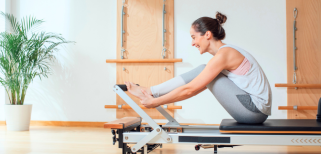




Health Information



Discover the Benefits of Pilates and Clinical Pilates

Discover the Benefits of Pilates and Clinical Pilates (by Sportsperformance Physiotherapy)
Pilates was initially developed in the 1920s by Joseph Pilates, a professional dancer, to aid in rehabilitation and functional movement. At the same time, Clinical Pilates is used for patient-specific treatment after an injury or surgery.
Pilates focuses on building core muscle strength, improving flexibility, balance, and posture through movement and breath control. It is a general exercise done on a mat or with specialised equipment, such as a reformer or Cadillac, and caters to the general public for improving overall physical health. In contrast, Clinical Pilates is customised for individual patients based on their specific injuries and physical needs. Clinical Pilates instructors are certified with expert knowledge and training in exercise physiology and pathology, providing targeted exercises to improve and address patients' concerns while reducing the risk of re-injury.
Pilates classes may be led by instructors with varying levels of expertise and experience, and it is best for improving overall health and well-being. However, the exercises may not be tailored to individual needs. Clinical Pilates is typically done with a certified instructor who can provide personalised attention and ensure proper form and technique. This level of supervision can be especially beneficial for those with injuries or chronic pain, as it can help prevent further damage and promote healing. A one-on-one clinical assessment can identify the root cause of your problem and tailor exercises with physiotherapy to ensure the best possible training for you as an individual.
In conclusion, Pilates has been a well-known form of exercise for many years, providing people with improved body strength and agility. However, it has gained popularity recently as a form of injury rehabilitation. If you feel unsure which exercise suits your physical condition, please discuss with a medical professional.
Further readings



